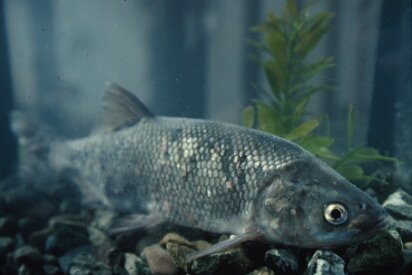For Immediate Release, January 15, 2025
|
Contact: |
Jeff Miller, (510) 499-9185, [email protected] |
Endangered Species Act Protection Proposed for California’s Clear Lake Hitch
CLEAR LAKE, Calif.— In response to a 2012 petition by the Center for Biological Diversity, the U.S. Fish and Wildlife Service today proposed to protect the Clear Lake hitch — a large minnow found only in Northern California’s Clear Lake and its tributaries — as a threatened species under the Endangered Species Act. Clear Lake hitch numbers have declined precipitously as their habitat has been degraded and destroyed.
“I’m relieved that strong protections are on the way for these iconic fish who embody the hope for a restored Clear Lake, and whose persistence is so meaningful for indigenous cultures,” said Jeff Miller, a senior conservation advocate at the Center. “The hitch need immediate emergency actions if they’re going to survive. Endangered Species Act protections can help ensure that happens.”
Clear Lake hitch migrate each spring, when adults make their way into the streams that connect to Clear Lake to spawn before returning to the lake. Millions of hitch once crowded into the lake’s tributaries during spectacular spawning runs. These masses of hitch were a vital part of the Clear Lake ecosystem and an important food source for numerous birds, other fish and wildlife. Hitch were also a staple food and a cultural mainstay for the original Pomo inhabitants of the region. Now just a few thousand adult fish spawn in a good year, with numbers dipping much lower in recent years.
The primary threat to Clear Lake hitch is a lack of water flowing in the tributaries during their spring spawning. This is caused by water over-withdrawal, both legal and illegal, that is being worsened by climate change-driven drought. The hitch are also threatened by fish-passage barriers, habitat degradation, pollution, and predation and competition from invasive fish such as carp and bass.
The hitch need emergency action to survive, including captive rearing, preventing illegal water withdrawals, controlling invasive predatory fish and maintaining adequate water flows.
The Clear Lake hitch’s closest relative was the Clear Lake splittail, a fish driven to extinction by the 1970s because of habitat alterations that dried out spawning streams and barriers that prevented their spawning migrations.
“Unless stream and wetland habitats are restored and the fish reintroduced into former spawning tributaries, Clear Lake’s hitch may go extinct like the lake’s former splittail population,” Miller said. “We can’t let that happen.”
Background
Clear Lake hitch have adapted to a very brief period of suitable stream conditions for their annual spawning run, with streams drying earlier each year. With an estimated six-year lifespan, the species can’t survive numerous consecutive years of failed spawning.
Suitable hitch habitat has been significantly degraded, with an 85% loss of former wetland habitat around Clear Lake critical for juvenile rearing, a 92% loss of historical stream spawning and rearing habitat, and worsening lake water quality.
Clear Lake Tribes have been leading efforts to restore the hitch and protect their spawning streams and were the first to begin scientific research on habitat conditions and threats to the fish. The California Department of Fish and Wildlife and U.S. Geological Survey now conduct regular hitch surveys. Several fish passage projects have been completed in spawning tributaries and invasive carp are being removed. The Tribes pushed the State Water Resources Control Board to review excessive creek water pumping and groundwater resources in the basin. Tribal and state biologists have been rescuing spawning and juvenile hitch stranded in drying streams.
In 2012 the Center petitioned to protect the Clear Lake hitch under both the federal and state endangered species acts. In 2014 the hitch was designated as a threatened species under the California Endangered Species Act.

The Center for Biological Diversity is a national, nonprofit conservation organization with more than 1.7 million members and online activists dedicated to the protection of endangered species and wild places.

